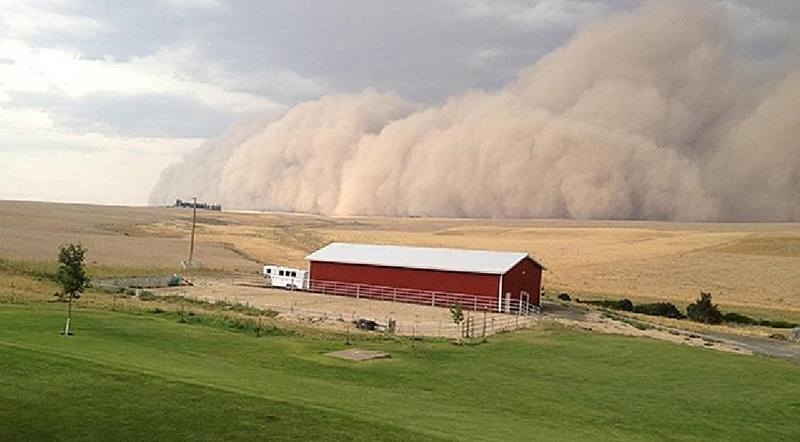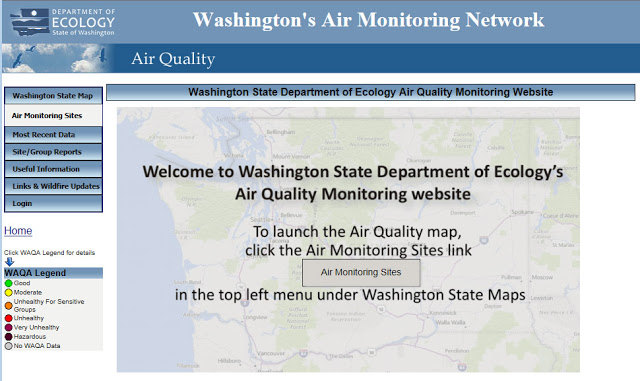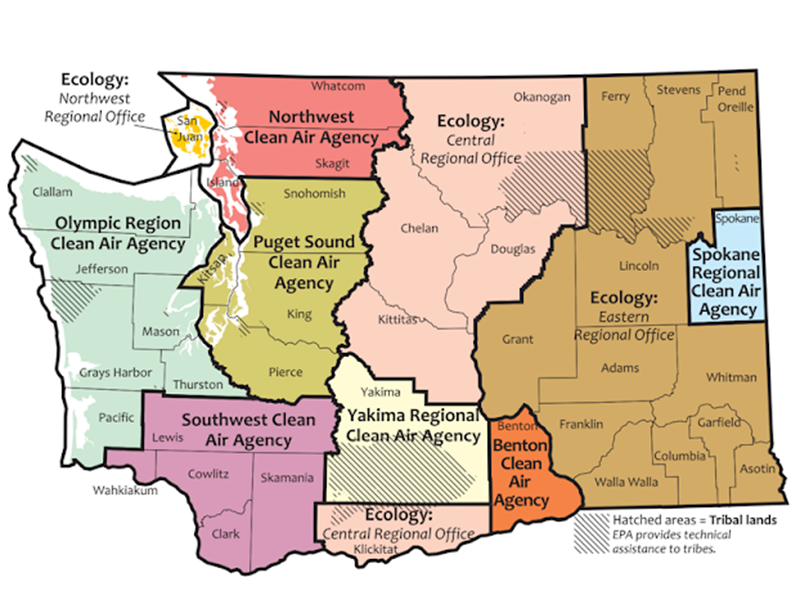
Every spring through fall, residents in Central and Eastern Washington are faced with the threat of dust storms. Dry conditions allow strong winds to pick up soil and blow it into vast clouds that can wreak havoc on the health and safety of anyone in their path.
Since the mid-1990s, dust storms have been occurring less frequently in Washington because farmers are using better management practices, such as soil erosion prevention techniques. For example, in the early ‘90s, Kennewick had seven dust storms in just one year! In more recent years, dust storms have become far more rare.
How we help protect you
Ecology and local clean air agencies monitor the air for dust and other types of air pollution. You can track air quality in your area and check on the levels on Ecology’s Air Quality Monitoring site.
In Washington, we measure air quality using the Washington Air Quality Advisory (WAQA). The color-coded WAQA categories show when air quality is good, moderate, unhealthy, or hazardous:
Ecology recently finished a High Wind Fugitive Dust Mitigation Plan. In this plan, we will continue to focus on agricultural sources that contribute dust to areas around Kennewick during high wind events. We will convene a High Wind Dust Prevention Workgroup made up of Ecology staff, conservation districts, and the Benton Clean Air Agency. Ecology works with these local partners to promote voluntary, soil erosion prevention practices.
What you can do
When the winds are strong and the ground is parched, it can be hard to avoid dust. However, you can help reduce airborne dust by driving slower on unpaved roads and by postponing projects at home that stir up dust.
How dust storms affect your health
When inhaled, tiny dust particles can settle deep into your lungs and irritate or damage sensitive tissues in the respiratory system. These tiny particles, known as particulate matter, or PM10, are about one-seventh the size of a human hair. Those most at risk are infants, small children, people with asthma, those with respiratory issues, the elderly, and those who engage in strenuous outdoor activities.
What to do during a dust storm
Protect yourself during a dust storm by:
- Staying indoors as much as possible.
- Closing windows, doors, and vents.
- Covering your nose and mouth.
- Wearing a mask designed to block dust particles.
- Watching for sudden changes in visibility while driving.
- Avoid driving during windy conditions when windblown dust is likely.
- Pulling over and turn on headlights as a safety precaution.
How to be alerted
Sign up for National Weather Service Wireless Emergency Alerts to receive high wind warnings. Weather.gov has links to a number of alert services.
For more information
Contact the clean air agency for your area:
- Benton Clean Air Agency: 509-783-1304
- Ecology Central Regional Office: 509-575-2490
- Ecology Eastern Regional Office: 509-329-3400
- EPA Region 10 - Tribal Lands: 1-877-424-4372
- Spokane Regional Clean Air Agency: 509-477-4727
- Yakima Regional Clean Air Agency: 509-834-2050
Watch for future stories on:
Ecology, Benton County Clean Air Agency, and local conservation districts will meet to discuss efforts to reduce soil erosion and dust sources in Eastern Washington's Horse Heaven Hills.





